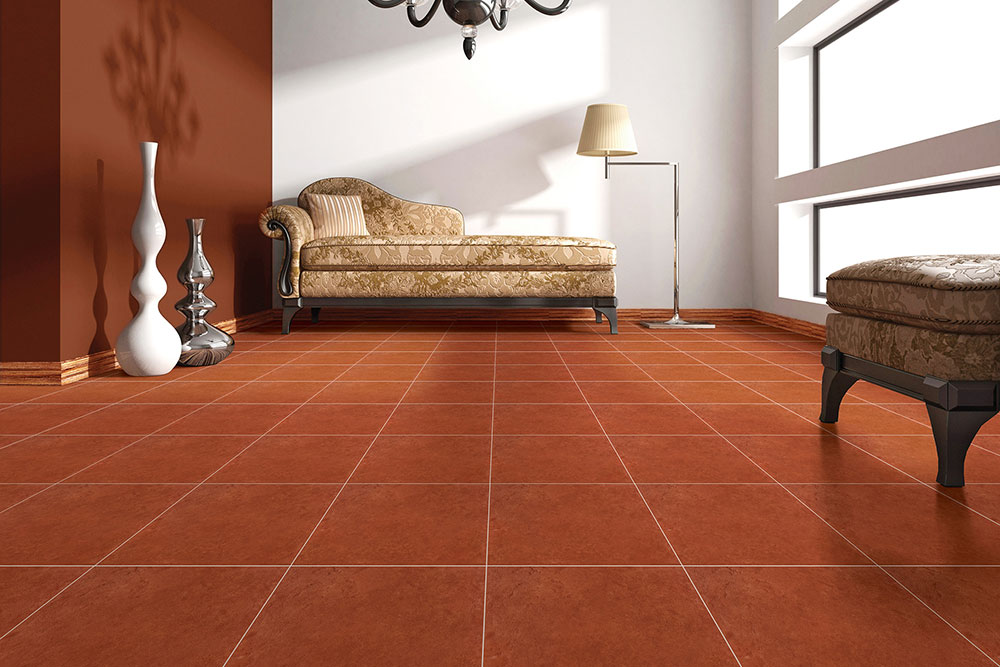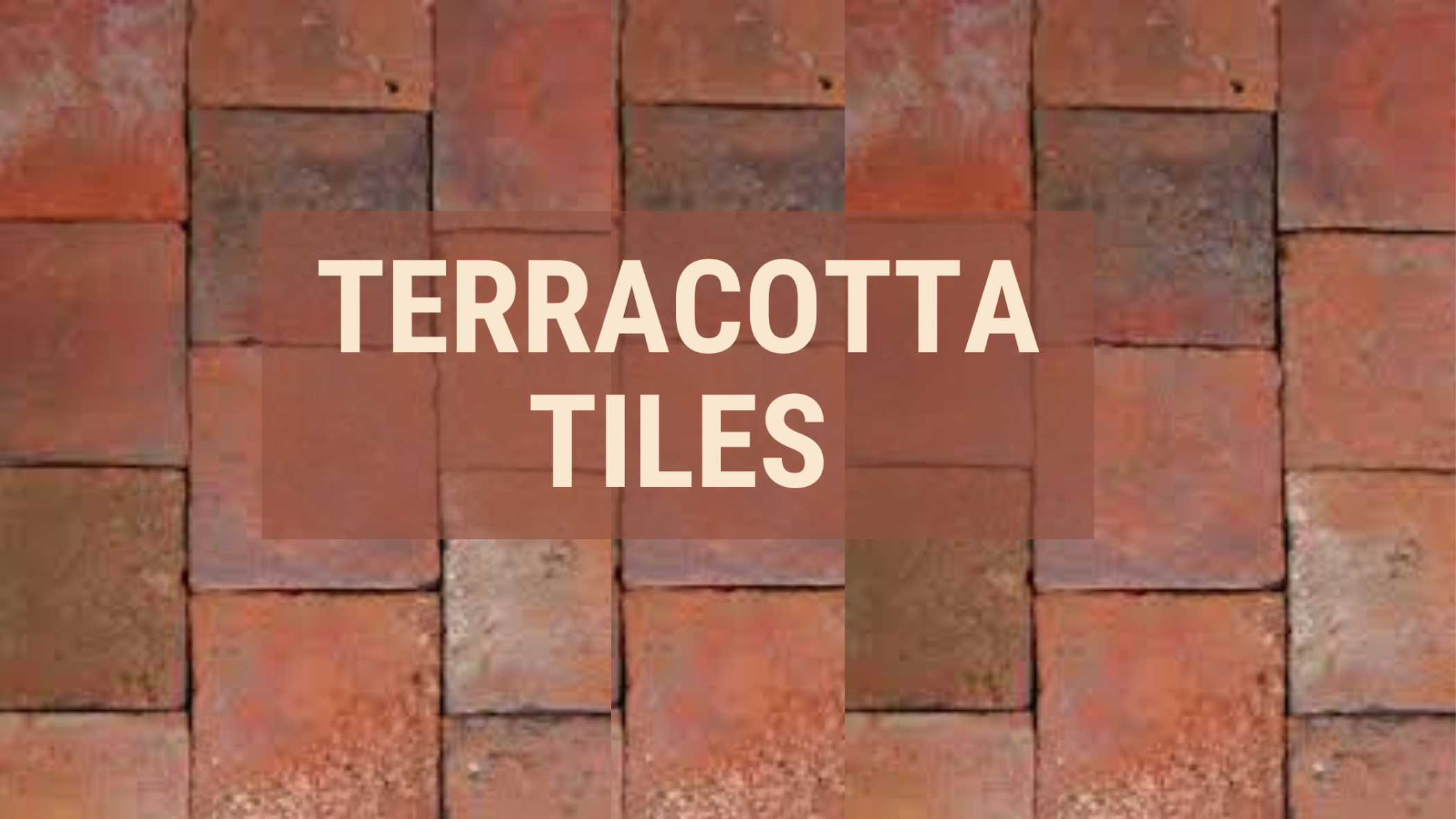Terracotta tiles are a type of ceramic tile made from natural clay that is shaped, dried, and then fired at high temperatures. The name “terracotta” comes from the Italian words terra (earth) and cotta (baked), reflecting the material’s natural origins. Known for their earthy, rustic look, terracotta tiles are widely used in both traditional and modern interiors to bring warmth and charm to a space.
How Are Terracotta Tiles Made?
Terracotta tiles are made by shaping clay into the desired tile form, which is then dried to remove moisture. The tiles are then fired in a kiln at temperatures ranging from 900°C to 1,000°C, which hardens the clay and gives the tiles their distinctive color, which can range from reddish-brown to orange. After firing, they may be glazed or left unglazed, depending on the intended look and use.
Applications of Terracotta Tiles
Terracotta tiles can be used in various settings, both indoors and outdoors:
- Floors: Ideal for flooring in living rooms, kitchens, hallways, and bathrooms, particularly in homes with a Mediterranean, rustic, or country-style décor.
- Walls: Terracotta tiles can be used for accent walls, backsplashes in kitchens, or even entire walls in bathrooms to create a warm, earthy look.
- Outdoors: Terracotta is often used for patios, terraces, and walkways, where its natural charm enhances the landscape. It’s especially popular in hot climates due to its cooling properties.
- Roofs: In some regions, terracotta tiles are used for roofing due to their durability and ability to handle extreme weather conditions.

Types of Terracotta Tiles
- Unpolished Terracotta Tiles: These are the classic form of terracotta tiles, left unglazed and showcasing the natural color and texture of the clay. They are often used in rustic or traditional settings.
- Polished Terracotta Tiles: These tiles have been glazed and polished for a sleek, shiny finish. They are more resistant to stains and easier to maintain but may lose some of their natural charm.
- Mosaic Terracotta Tiles: These are smaller tiles that are arranged in patterns or designs. They can be used for creating decorative features, such as borders or intricate floor designs.
- Terracotta Floor Tiles: Designed specifically for flooring, these tiles are thicker and more durable. They can be used for both indoor and outdoor areas.
Properties of Terracotta Tiles
- Porosity: Naturally porous, which means they need to be sealed to prevent moisture absorption and stains.
- Durability: Terracotta is durable, especially when properly sealed, making it suitable for high-traffic areas.
- Thermal Insulation: Excellent for temperature regulation, keeping spaces cool in summer and warm in winter.
- Eco-Friendly: Made from natural clay, terracotta tiles are sustainable and biodegradable.
- Color Range: Terracotta tiles are typically reddish-brown, but they can vary in color depending on the clay used and the firing process.
Advantages and Disadvantages of Terracotta Tiles
Advantages:
- Aesthetic Appeal: Terracotta tiles have a warm, earthy look that adds a natural and rustic charm to any space, making them ideal for creating a traditional, Mediterranean, or rustic style.
- Durability: When properly sealed, these tiles are quite durable and can last for many years. They also withstand high traffic areas and changing weather conditions well.
- Eco-friendly: Made from natural clay, terracotta tiles are eco-friendly and sustainable, as they use natural resources and require less energy to produce compared to other types of tiles.
- Thermal Insulation: Terracotta tiles have excellent thermal properties, helping to keep interiors cool in hot weather and warm during cooler months.
Disadvantages:
- Porosity: Terracotta is porous by nature, meaning it can absorb moisture and stains unless sealed properly. This can lead to discoloration and damage over time if not maintained.
- Maintenance: These tiles require regular sealing to protect them from moisture and stains. Over time, they may need resealing to maintain their appearance and durability.
- Brittleness: Terracotta tiles can be more brittle than other types of tiles, so they may crack or chip if subjected to heavy impact.
Other tiling options and Comparison with terracotta
Ceramic Tiles: Ceramic tiles are another popular flooring option, made from clay but fired at higher temperatures than terracotta. They are more durable and less porous but may lack the warmth and rustic appeal of terracotta.
- Comparison: While ceramic tiles are easier to maintain, terracotta tiles have a more unique, natural look and better thermal properties.
Porcelain Tiles: Porcelain is denser and less porous than terracotta. It’s durable and requires less maintenance but doesn’t offer the same warmth or rustic charm.
- Comparison: Porcelain tiles are more durable and easier to clean but lack the aesthetic warmth of terracotta.
Vitrified Tiles: These are highly durable, stain-resistant, and come in a wide range of designs. However, they are typically more modern in look compared to the traditional, rustic feel of terracotta.
- Comparison: Vitrified tiles are more suited to contemporary styles. They require less maintenance, but do not provide the same earthiness and natural texture as terracotta.
Conclusion
Terracotta tiles are a versatile and sustainable choice for homeowners looking for a natural and rustic aesthetic. While they require more maintenance than other tiles due to their porosity, their unique charm, durability, and eco-friendly nature make them an excellent option for both indoor and outdoor spaces. Whether used for flooring, walls, or even roofs, terracotta tiles add a timeless beauty to any setting, offering a warm and inviting atmosphere.
